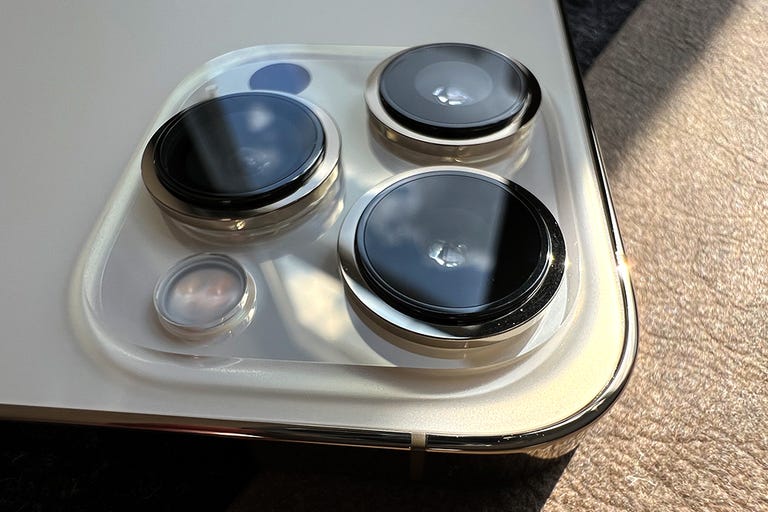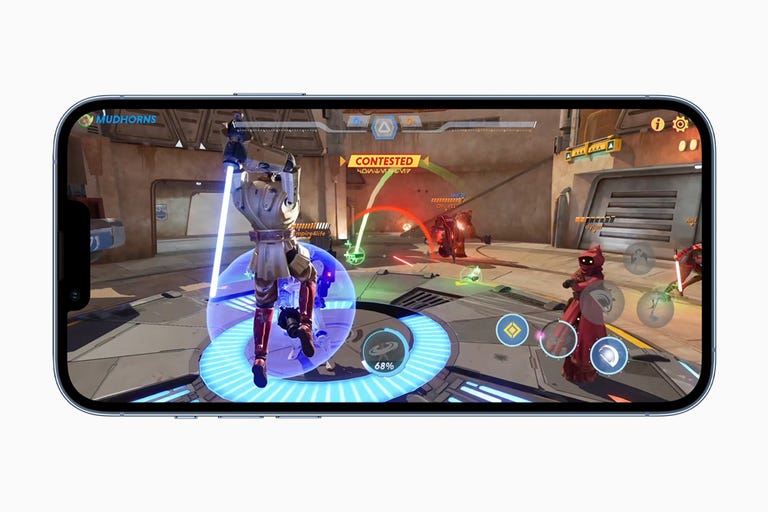The range-topping iPhone 13 Pro and iPhone 13 Pro Max — the third consecutive iPhone duo to rock the “Pro” tag — are, yet again, Apple’s most feature-packed phones to date. The successors to the iPhone 12 Pro and iPhone 12 Pro Max deliver consequential hardware improvements while retaining the same design and luxurious workmanship. In addition to the mandatory chip upgrade, new features include a ProMotion Super Retina XDR display with a high refresh rate, and an even better camera system.
Like the outgoing models, the new iPhones 13 Pros are available with a 6.1- and a 6.7-inch screen. Pricing has remained unchanged — the iPhone 13 Pro starts at $999 and the Max kicks off at $1,099.
I put both the iPhone 13 Pro and the iPhone 13 Pro Max through their paces over the past week. The upgrades they bring are mostly hardware related, so you won't notice them at first sight, but they're noticeable the minute you start using the devices. Here’s what you need to know about the products’ design, display, camera setup, and performance.
DESIGN
Save for a slightly bigger camera bump on the back and a smaller display notch, the iPhone 13 Pro and Pro Max look identical to their predecessors. Apple has kept the previous generation’s distinctive design with flat edges, a glossy stainless steel frame, and a matte glass back. The last two have been a calling card for Pro iPhones since the introduction of the iPhone 11 Pro and iPhone 11 Pro Max in 2019.

The iPhone 13 Pro and Pro Max are luxury phones, and their build quality and water resistance reflect that (as does their price). Their tactility is best in class, too — the stainless steel, the Ceramic Shield front, and the hardened glass on the back of each Pro are incredibly nice to interact with, leaving absolutely no doubt that you are holding a top-shelf product.
The new phones are available in the same color options as the iPhone 12 Pro duo — Sierra blue, gold, graphite, and silver — although the blue finish and the gold finish do differ slightly.
DISPLAY
Thanks to ProMotion tech with adaptive refresh rate of up to 120 Hz, the all-new, brighter Super Retina XDR displays of the iPhone 13 Pro and Pro Max are among the main reasons why you should consider upgrading. Previously available only on the iPad Pro, the tech transforms even the most basic interactions — like scrolling through pages or endless social media feeds — into smoother, more fluid, more enjoyable experiences.

Driven by individually backlit pixels, the iPhone Pros' OLED display panels are also sharp, vibrant, and compatible with HDR-enhanced content. I found the bigger Max model to be the best option if gaming, watching video, and conquering work are your top priorities.
CAMERA
Apple treated the iPhone 13 Pro and Pro Max to a complete camera revamp with a trio of new sensors and sensor-shift optical image stabilization. The wide and the ultra wide snappers are also sitting behind brighter lenses, while the telephoto camera has 3x optical zoom that’s 50% and 20% bigger than the iPhone 12 Pro and the iPhone 12 Pro Max’s.

The ultra-wide camera can easily snap not only landscapes, architecture, and group shots in tight spaces, but also macro shots with a minimum focusing distance of only 2 centimeters. And this time around, the iPhone 13 Pro and Pro Max have an identical camera setup. For comparison, the iPhone 12 Pro Max had a fancier camera than the iPhone 12 Pro.
Just like the iPhone 13 and the iPhone 13 mini, the iPhone 13 Pro and Pro Max have cinematic mode for capturing video, as well as photographic styles. By giving you the option to easily change the focus in your videos and add depth-of-field effects, cinematic mode turns the latest iPhones into legit pro-grade camera rigs. Depending on your preferences, the available photographic styles can make your photos look cooler, warmer, or more vibrant.

ProRes video recording is yet another reason why avid videographers should consider the iPhone 13 Pro and Pro Max smartphones. The professional video editing format will arrive exclusively to the new Pro iPhones via a future update.
The front-facing camera of the iPhone 13 Pro and Pro Max is also excellent. It can capture selfies and 4K video with superb quality, and it offers access to the same set of creative tools as the rear-facing triple camera.
Combined with the incredible image processing capabilities of the A15 Bionic chip and its Neural Engine, the upgraded camera hardware allows the latest Pro iPhones to effortlessly capture still images and 4K video with outstanding quality.
Unless you are willing to drop another iPhone’s worth on a bulkier camera with a bigger sensor, you won’t find a pocket-friendly device that can take better photos or record better videos. All the above tools are presented via a camera app with an intuitive interface and cutting-edge features like night mode and Smart HDR 4, so beginners shouldn't shy away from the luxury iPhones.
PERFORMANCE
The new phones have Apple's A15 Bionic chip on board, which has a 5-core GPU that’s beefier than the 4-core unit of the iPhone 13 and iPhone 13 mini. Built via an advanced 5-nanometer manufacturing process that made headlines with its predecessor and the Apple M1 chip last year, the A15 Bionic packs billions of transistors into a tiny space, so it’s remarkably energy-efficient.
The chip is the most powerful you’ll find in a smartphone, and it shows. Both iPhone 13 Pro models effortlessly conquered a workflow of switching between a double-digit amount of open apps, editing photos and videos captured by the cameras, and graphic-intensive gaming.

I easily got a full day of use from the iPhone 13 Pro between charges. The product has a battery with larger capacity than its predecessor, so I didn’t have to worry about more frequent charging trips caused by the new ProMotion display. After a day of testing it consistently had around 30% battery left.
With a larger battery than the iPhone 12 Pro Max, the 13 Pro Max had even more power to spare even after a full day of constant testing. The bigger iPhone’s overall battery performance is outstanding — if you are mindful about your screen-on time, there’s a good chance that you’ll get 2 full days of use between charges.
You can power up the iPhone 13 Pro and iPhone 13 Pro Max rapidly using a MagSafe or a standard wireless charger, as well as with its bundled USB-C-to-Lightning cable. When paired with a USB-C adapter, the latter is usually the fastest option of the bunch.
WRAP-UP
The iPhone 13 Pro and iPhone 13 Pro Max are a technological tour de force with best-in-class craftsmanship and hardware performance, as well as an iOS 15 platform that’s designed to take full advantage of their advanced capabilities. I think Apple’s display and camera upgrades are significant and enough to justify making the jump to the 13 Pro family.
The 13 Pro Max is the one to get if you are looking for the most display and battery life in an iPhone — there’s no task or workflow that it isn’t up for. The smaller iPhone 13 Pro is just as powerful, but much easier to use with one hand on the go.
Entry-level iPhone 13 Pro variants come with 128GB of onboard storage. You can double the memory for another $100. A 512GB iPhone 13 Pro and iPhone 13 Pro Max costs $200 more than the 256GB version. For the first time ever, you can also spec the Pro with practically limitles 1TB of storage, which adds a cool $500 to the base price.




